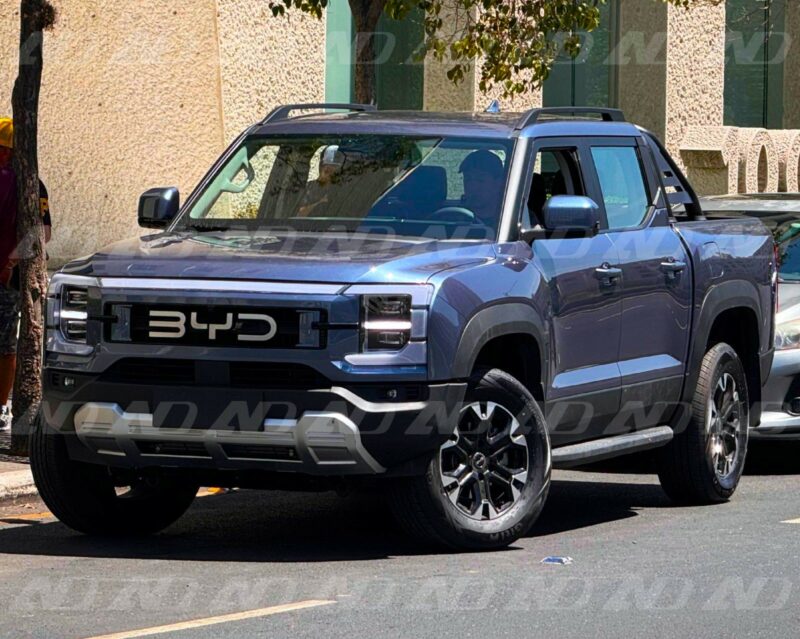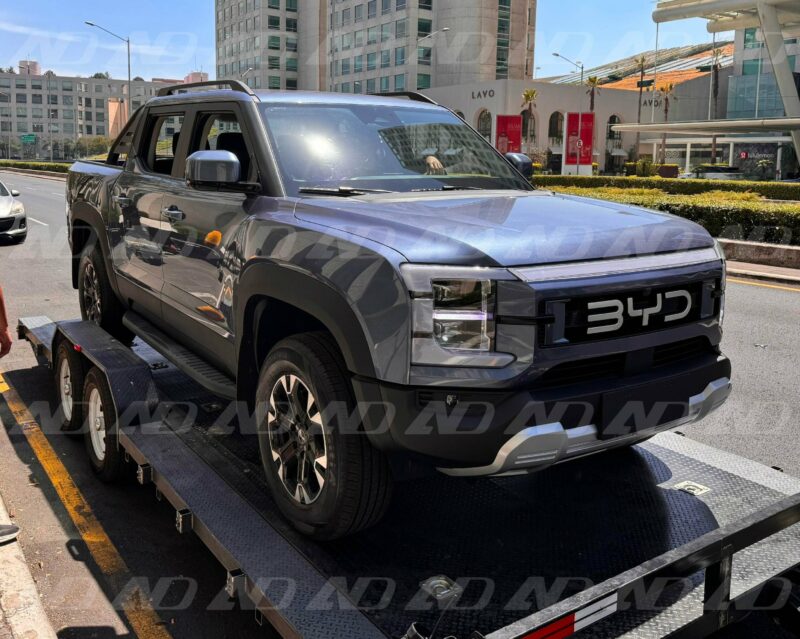BYD Shark pickup truck to launch this week
We now know that the BYD pickup is called Shark. As can be seen from BYD’s teaser poster the company isn’t giving much away ahead of its launch at the Beijing Auto Show on April 25 however we have uncamouflaged spy shots from amigos in Mexico.
The fact that the BYD poster is in English rather than Chinese is telling showing that the pickup has primarily been designed with overseas markets in mind. Many of the spy shots seen have come from overseas and right hand drive as well as left hand drive versions have been spied indicating there should be little time lag for sales to begin in important RHD markets for pickups like Australia and South Africa.
In many ways the Shark can be seen as pickup version of the Fang Cheng Bao Bao 5 and uses the same DMO platform which is purposely designed for off-road PHEV vehicles. The DMO platform prioritizes energy efficiency by integrating the advantages of BYD’s DM-i and DM-p technology. Furthermore, it allows real off-road ability. Using the electric four-wheel drive system the pickup can adjust the torque distribution between front and rear swiftly and intelligently. System responses are measured in milliseconds allowing ultra-fast motor responses in conditions where there are rotational changes such as in icy conditions. The energy center lock facilitates intelligent torque transfer between front and rear axles, enabling speeds up to 30 times faster than a mechanical center lock.





The DMO platform adopts a longitudinal layout for the engine and electric hybrid system (EHS). It is compatible with both 1.5T and 2.0T longitudinal engines which form part of BYD’s Xiaoyun plug-in hybrid system. Currently the exact powertrain offering for the Shark is unknown and with the Bao 5 only the 1.5T is offered. Both engines have a high compression ratio, high thermal efficiency, and include advanced technologies such as a high-pressure fuel injection system. Maximum power of the 1.5T is 143 kW (194 hp) while for the 2.0T it’s 180 kW (245 hp). The DMO system can achieve fuel consumption of 7.8 l/100 km and a combined range of 1200 km. High efficiency, up to 99.5%, silicon carbide chips are used to control the PHEV system.
Inside the truck is similar to the Bao 5. Typically for a BYD it has both a floating instrument screen and rotatable central infotainment screen.


We should learn all the missing details later this week and sales are likely to begin before the end of years with BYD concentrating on exports rather than domestic sales.
Sources: Autohome, Fast Technology



